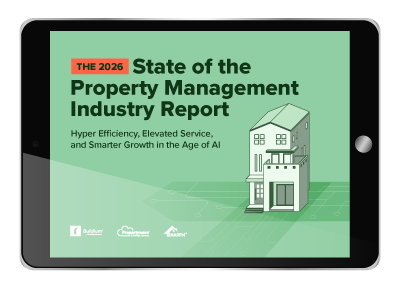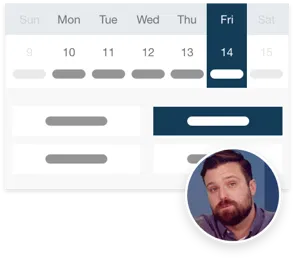Also see: NNN Lease
As a residential property manager, you’re likely familiar with the ins and outs of rental agreements and lease structures for homes and apartments. But what happens when you encounter a different type of lease, one commonly used in commercial real estate? That’s what happens when a triple net lease (NNN) comes into play.
Even though this lease is more often associated with commercial properties, understanding its structure and key components can be helpful for residential property managers, especially when managing mixed-use properties or commercial tenants.
What Is a Triple Net Lease (NNN)?
At its core, a triple net lease is a type of commercial lease agreement where the tenant agrees to pay not only the base rent but also the property’s operating expenses. These expenses typically include:
- Property taxes
- Insurance
- Maintenance costs
These costs are referred to as the “three nets,” and when added together, they can make up a significant portion of the total expenses of the property. So, in a triple net lease, the tenant essentially assumes responsibility for these additional costs, beyond the rent. This arrangement can help the property owner or landlord minimize the financial burden of these expenses, making it an attractive option for them.
For residential property managers, it’s important to understand that this is a common structure in commercial real estate. However, you might encounter triple net lease in situations where you manage mixed-use properties that include both residential and commercial units, or when you’re dealing with commercial tenants within a residential complex.
Breakdown of a Triple Net Lease (NNN)
To truly grasp the concept of a triple net lease, let’s break down the three key components—the “three nets.” These are the additional expenses that the tenant will be responsible for under the terms of the lease:
1. Property Taxes
In a triple net lease, the tenant pays for the property’s property taxes. This can include local property taxes, school taxes, and other assessments related to the land or building. While landlords typically pay property taxes in residential leases, tenants in a triple net lease take on this responsibility.
2. Insurance
The tenant is also required to cover the insurance costs for the property. This could include property insurance, liability insurance, and even other specialized insurance policies that protect the building and landlord from specific risks. In residential leases, landlords often take care of these insurance premiums, but in a triple net lease, it becomes the tenant’s responsibility.
3. Maintenance
Finally, maintenance costs are another important net in a triple net lease. This includes the costs for general upkeep of the property, such as landscaping, roof repairs, HVAC servicing, and other routine maintenance tasks. Essentially, the tenant takes on the role of maintaining the property in good condition, which would usually be handled by the landlord in residential leases.
This gives landlords more predictable income, as the tenant assumes responsibility for the costs that could fluctuate over time.
How Triple Net Leases Work
Understanding how a triple net lease operates is crucial for property managers, especially if you deal with commercial tenants or mixed-use properties. Let’s walk through the general process of how these leases are structured and the roles of both the landlord and the tenant.
1. Signing the Lease Agreement
When a tenant signs a triple net lease, they agree to pay the base rent along with the additional “net” costs for taxes, insurance, and maintenance. These costs can either be included as part of the monthly rent payment or billed separately, depending on the terms of the lease. The lease should clearly outline the landlord’s and tenant’s responsibilities for these expenses.
2. Landlord’s Responsibilities
While the tenant takes on the majority of the financial burdens under a triple net lease, the landlord still retains some key responsibilities. These may include:
- Structural repairs: The landlord is typically responsible for major structural repairs, such as fixing the foundation, replacing a roof, or addressing significant building systems that aren’t covered under maintenance costs.
- Initial property improvements: In some cases, the landlord may be responsible for initial property improvements before the tenant occupies the space.
3. Tenant’s Responsibilities
The tenant in a triple net lease is responsible for paying the three “nets” (taxes, insurance, and maintenance), as well as any other operating expenses associated with the property. The tenant may also be required to handle:
- Routine repairs and maintenance
- Paying utility bills
- Keeping the property remains in good condition
4. Lease Structure
Triple net leases can vary in terms of structure. Some common variations include:
- Absolute Triple Net Lease: The tenant is responsible for all expenses, with no exceptions or limitations for the landlord.
- Modified Triple Net Lease: The landlord may still be responsible for some costs, like structural repairs or capital improvements, but the tenant covers the majority of operating expenses.
Why Residential Property Managers Should Care About Triple Net Leases
At first glance, triple net leases might seem like a concept reserved for commercial properties. However, there are situations where residential property managers may encounter these leases, and understanding them can benefit you in several ways.
Mixed-Use Properties
If you manage a mixed-use property with both residential and commercial units, you might encounter commercial tenants who have signed a triple net lease. In these cases, it’s important to know what responsibilities fall on the tenant and what remains the landlord’s responsibility. It will also be helpful when negotiating lease terms and managing tenant expectations.
Commercial Tenants in Residential Complexes
Sometimes, a residential complex may house commercial tenants in separate units, such as retail spaces or office spaces. In such cases, these commercial tenants are more likely to enter into a triple net lease. Understanding this lease structure helps create a better experience with tenants and clear communication about financial obligations.
Benefits of Understanding Commercial Leases
Even if your primary focus is on residential properties, understanding commercial leases, including triple net leases, can give you a competitive edge. This knowledge can help you:
- Offer better guidance to clients who may own mixed-use or commercial properties
- Expand your portfolio to include commercial tenants
- Navigate tenant disputes more effectively when commercial tenants are involved
Frequently Asked Questions
What is a triple net lease?
A triple net lease is a lease agreement where the tenant is responsible for paying property taxes, insurance, and maintenance costs in addition to rent. This type of lease shifts the operating expenses from the landlord to the tenant.
Are triple net leases only for commercial properties?
While Triple Net Leases are common in commercial real estate, residential property managers might encounter them in mixed-use properties or residential complexes that include commercial units. Understanding these leases can be helpful in these kind of scenarios.
What expenses does a tenant cover under a triple net lease?
In a triple net lease, the tenant covers property taxes, insurance, maintenance costs, and potentially other operating expenses. The specific responsibilities can vary, but the tenant typically handles routine repairs, utility bills, and maintaining the property in good condition.
Read more on
